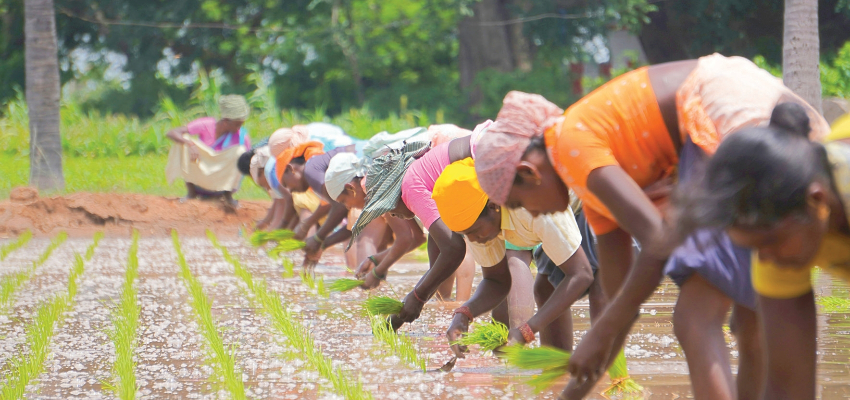The Farmer’s in a Fix

How many of us consciously think and thank the farmer who toils relentlessly to bring food to our table?
That, he faces the vagaries of the weather and in a sudden cloud burst, loses his entire yield that would have earned him several lakh of rupees.
That, he works until the last point of production only to be swindled by middlemen, who take away the large share of the price of his produce, while he is left with a measly amount.
That, approximately 86% of farmers in India are small and marginal farmers, holding less than two acres of land and collectively own around 47% of the crop area of our country, according to the 10th agriculture census of 2015-16 (the last that has been done).
When unprecedented heavy rains batter all parts of our country, like they unusually did in the month of May this year, the entire focus of the national media was on the infrastructural disgrace in the form of pot-holed roads, collapsed bridges, leaking rooftops in airports, flooding of waters on streets and homes, railway tracks and metro stations. Of course, that is important to bring to light, the alleged corruption and deficient quality work, but it is equally necessary to prioritise woes of the farmers, which are so far amplified only in the regional media.
The size of the agricultural industry in India has reached Rs. 99,689.0 billion in 2024, as per the International Market Analysis Research and Consulting Group (IMARC).
Further it states, the market is set to reach Rs. 2,36,603.2 Billion by 2033, exhibiting a Compunded Annual Growth Rate (CAGR) of 10.08% during 2025-2033.
In 2011, according to the Census of India, 68.84% of India's population lived in rural areas, while 31.16% lived in urban areas. And, as per the Economic Survey of 2023-24, around 40% of India’s population will live in urban areas.
The shift of farmers to forgo farming and migrate to urban areas for livelihood is a regressive step in one sense by 2030. Agriculture today can become big business, if technology is used and farmers are supported by the government in a big way for establishing food processing plants, so that their produce, if not sold, do not perish.
The success of Vietnam’s agriculture for example, is due to it being significantly linked to its vibrant food processing industry. This industry is a crucial link between agricultural production and the market, adding value to raw materials and enabling them to be sold, domestically and internationally.
In short, the Indian farmer, particularly the small landholder, is crying for help from the government. While the agro-tech industry is rising admirably and helping farmers from seed-to-shelf journey, a boost from the government from the micro level, will help the farming community thrive with pride.
Dear readers, we have dedicated this issue to Environmental, Social, and Governance (ESG) that forms the crux of corporate investment in companies these days. Read on...